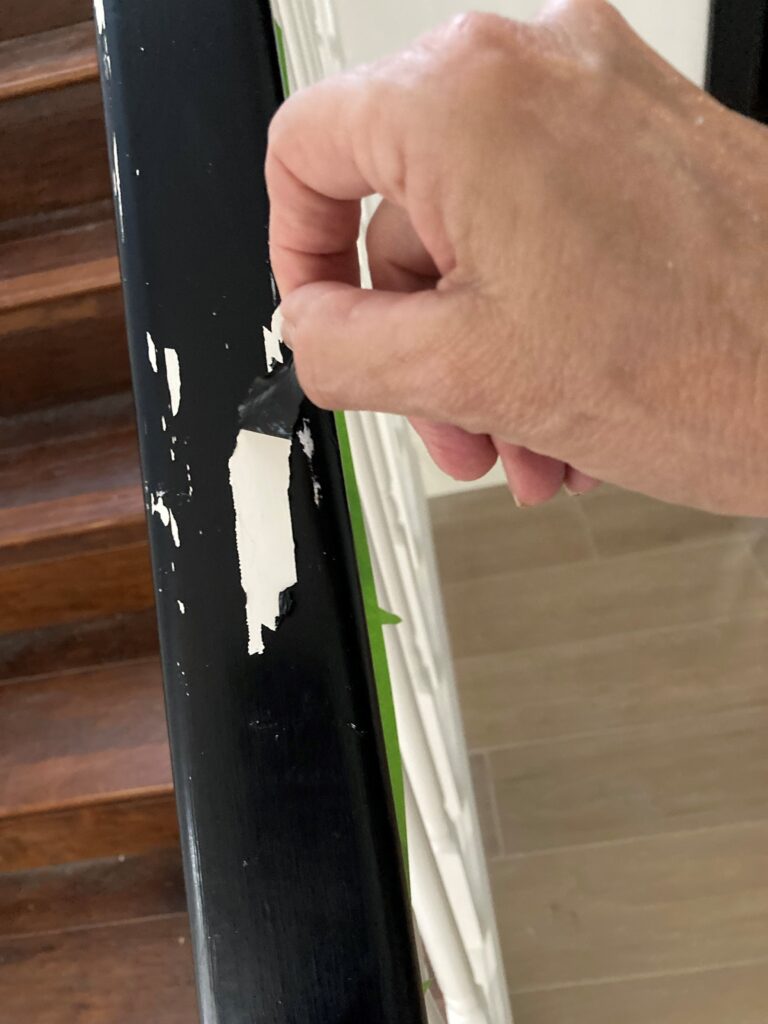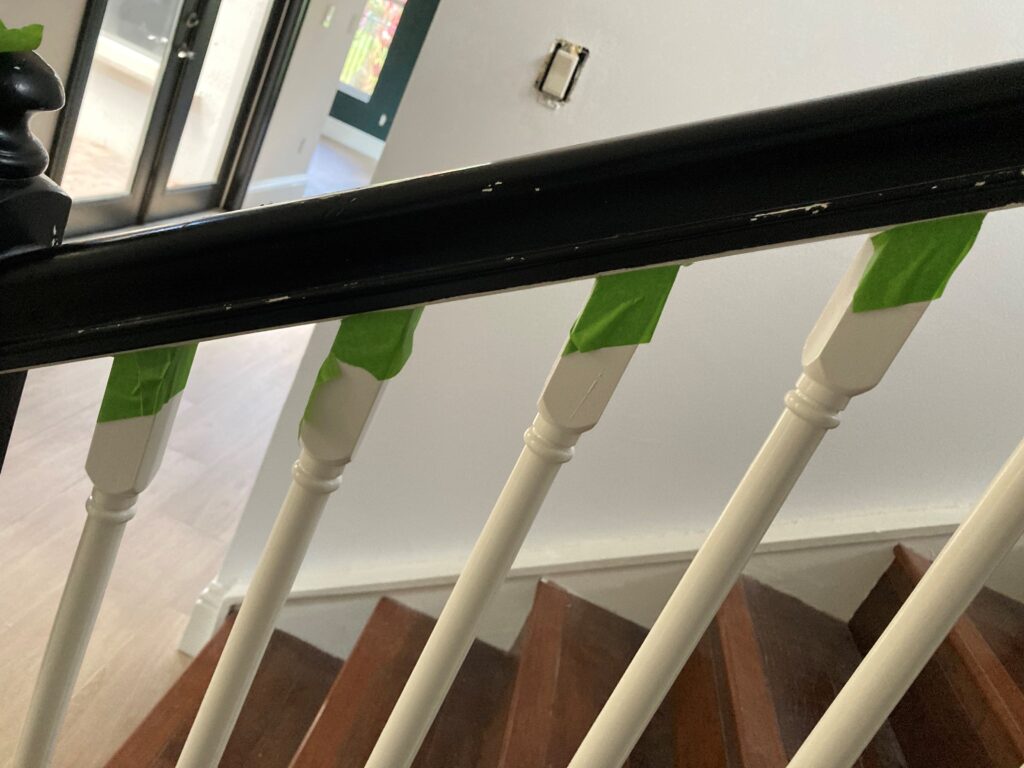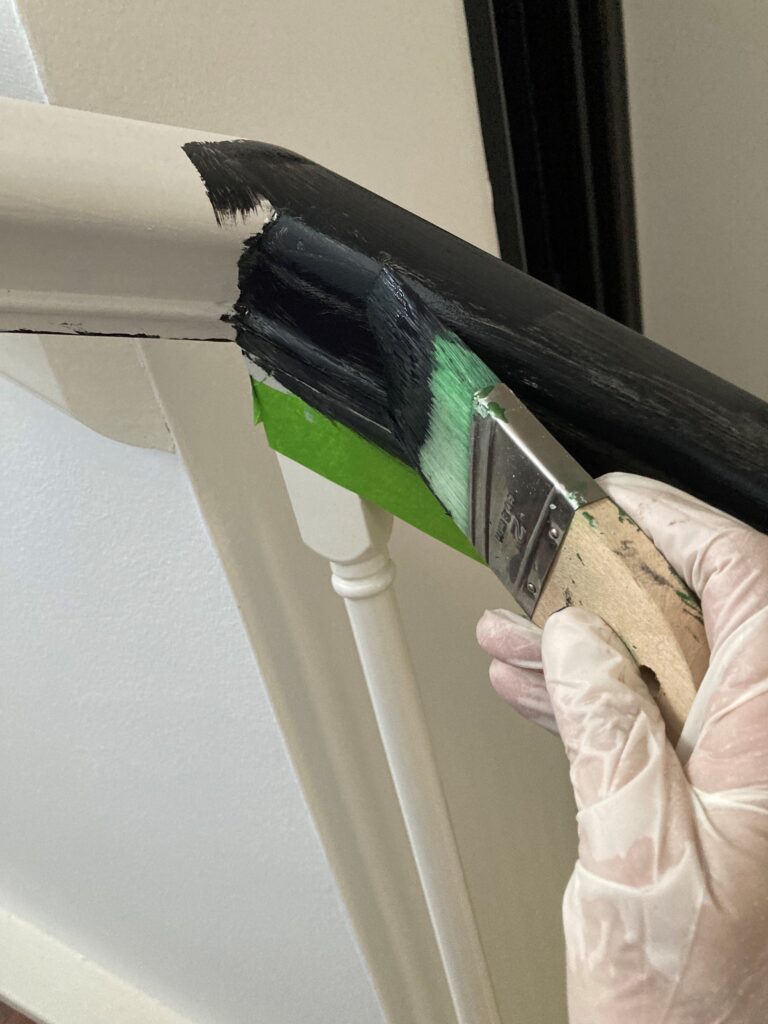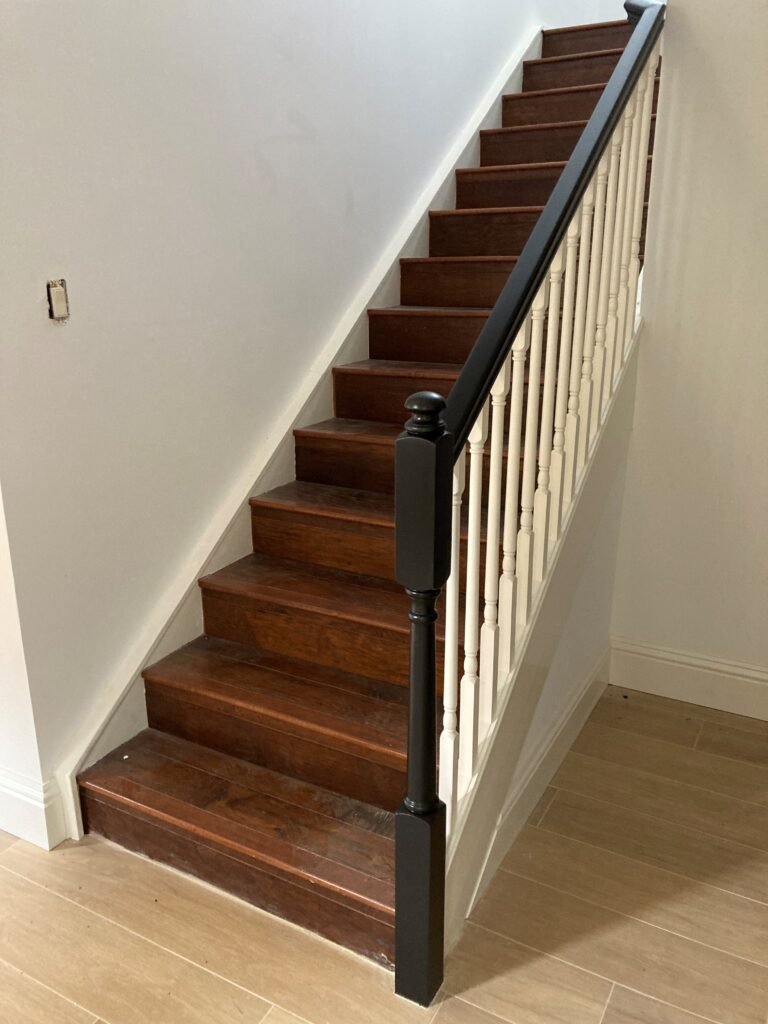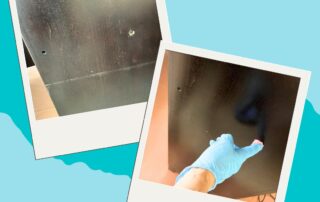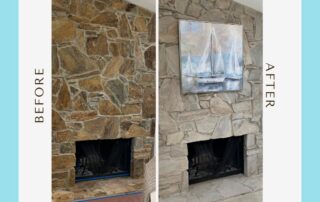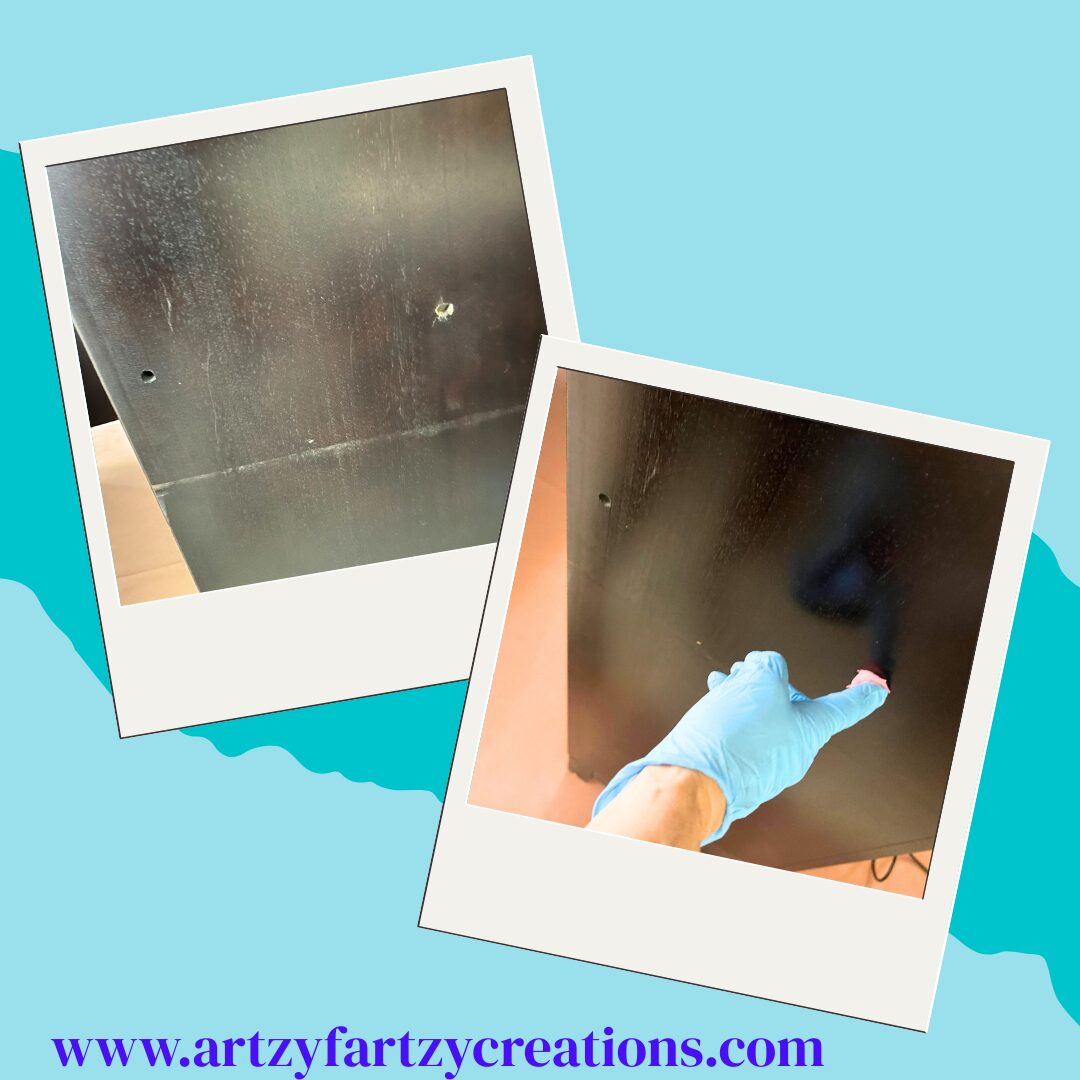Is the latex paint not sticking to your molding, doors, or staircase? It may be that someone painted latex over oil-based paint.
I have the Ultimate paint hack you wish you knew sooner.
Before you start painting, it’s super important to know if the existing paint is oil-based or latex.
But don’t worry! I’m going to share my handy cotton ball hack with you, so you don’t make the mistake many amateurs do.
Yikes! Did you paint your doors, floorboards, or staircase only to have it peel back like this?
Here’s why…..
This staircase was painted with latex paint over oil-based paint, which is a big no-no. Latex paint won’t stick to oil-based paint and will eventually peel off, as shown in the picture above.
Interestingly, oil-based paint will adhere to latex paint.
So, how can you determine the type of original paint? Here’s a handy trick that most people don’t know: Take a cotton ball with some mineral spirits or nail polish remover and rub it on the surface. If the paint comes off on the cotton ball, it’s latex paint. If nothing happens, it’s oil-based paint.
Let me guide you through the proper steps to fix the damage and successfully paint latex over oil-based paint.
The glossy surface of oil-based paint makes it difficult for any other paint to bond. If you apply water-based paint directly over oil-based paint, it will flake and crack as the water-based paint pulls away.
Step #1
Use a fine-grit sandpaper to remove the loose paint. Then wipe it down with TSP to clean it.
Step #2
If you’re using two different colors, tape off the areas you want to keep paint-free. This will make the job much easier and save you from having to do any touch-ups later.
Step#3
This is the most important step. Apply a bonding primer that is specifically designed to promote adhesion between oil-based and latex paints. A good quality primer I like to use is Stix. I also use this on my kitchen cabinets before painting them. Once it’s dry do the scratch test. Use your fingernails and scratch the surface to make sure it doesn’t come off.
Step #4
You’re going to want to use a good Enamel paint. Enamel paints are commonly used for high-traffic areas and are very durable. Enamel paint dries with a hard finish that is easy to clean. It’s also available in satin, semi-gloss, or high gloss.
Step #5
Use a soft brush to help eliminate brush marks. Apply thin even coats and let the first coat dry before applying the second coat. Apply two coats and let dry overnight.
And there you go, Easy Peasy!
With these tips and techniques, you can confidently tackle your painting projects and achieve beautiful, long-lasting results. If you have any questions feel free to reach out. I’m always here to help. Happy painting!
P.S. Do you have a hobby you would like to turn into a business but need some help getting started? Join Empowering Women.
P.S.S. Make sure you don’t miss out on signing up for my blog, filled to the brim with home decorating and DIY tips!
XOXO
Cheryl
Artzy Fartzy Creations. Oh Yes you can DIY!
Best Places to Sell Your Painted Furniture and Art (Without Relying on Social Media)
Let’s Be Real—You Can Sell Art Without Social [...]
DIY Kitchen Cabinet Makeover: Budget-Friendly Transformation You Can Do Yourself
DIY Kitchen Cabinet Makeover: Budget-Friendly Transformation You Can [...]
DIY Metallic Molding Technique: Add Old-World Charm to Your Home
Looking to add a little extra drama and [...]
How to Repair Holes in Wooden Furniture – Fast, Easy, and Budget-Friendly!
hand applying wood filler to a hole in [...]
How To Paint A Brick Fireplace In One Easy Step
Is your outdated brick fireplace dragging down your room? If [...]
DIY Magic: Create a Raised Cherry Blossom Stencil Design with Glitter That Pops!
Raised cherry blossom stencil with glitter on a painted [...]
Contents
Recent Reads
DIY Kitchen Cabinet Makeover: Budget-Friendly Transformation You Can Do Yourself
DIY Kitchen Cabinet Makeover: Budget-Friendly Transformation You Can [...]
DIY Metallic Molding Technique: Add Old-World Charm to Your Home
Looking to add a little extra drama and [...]
How to Repair Holes in Wooden Furniture – Fast, Easy, and Budget-Friendly!
hand applying wood filler to a hole in [...]


